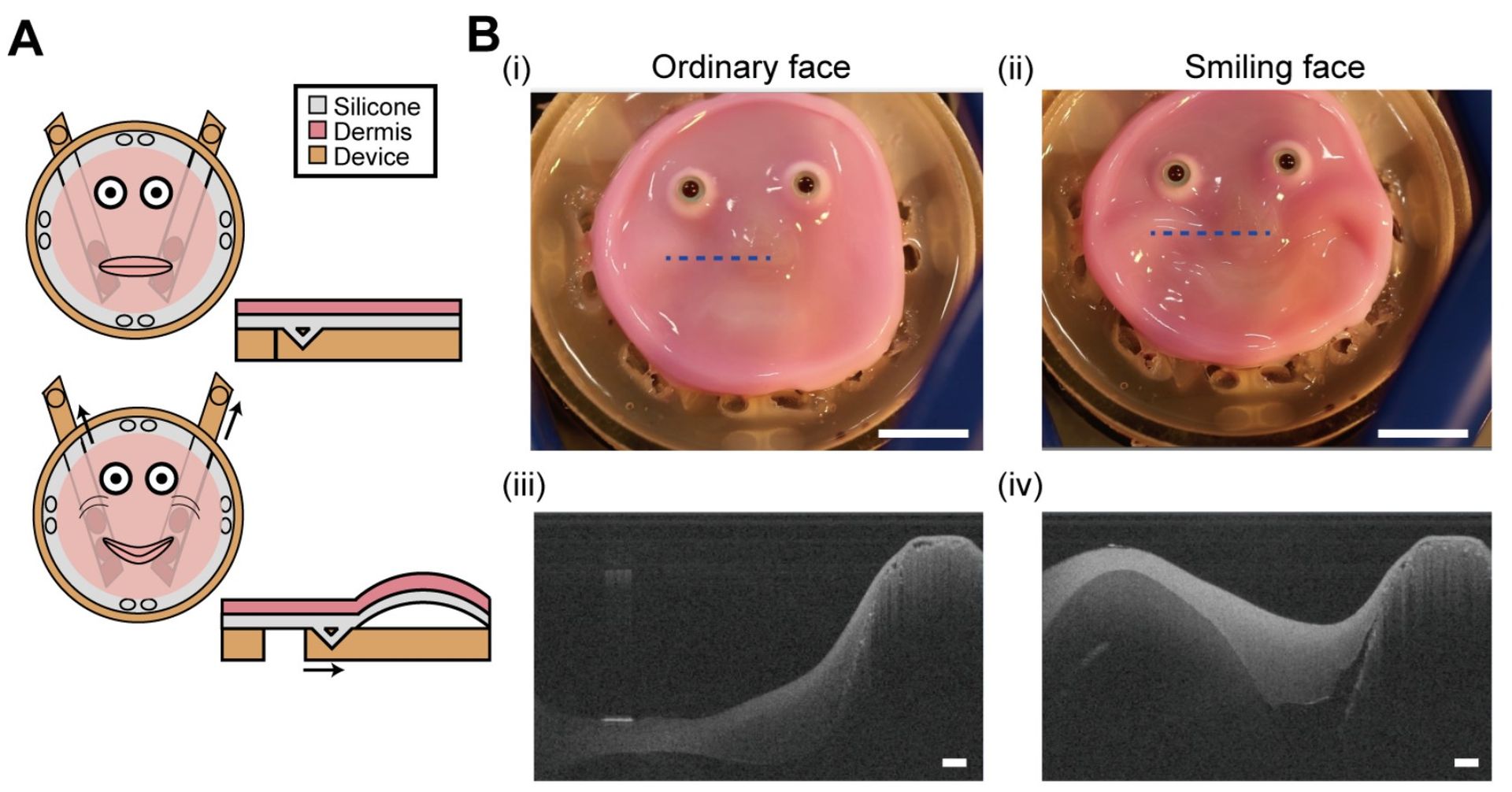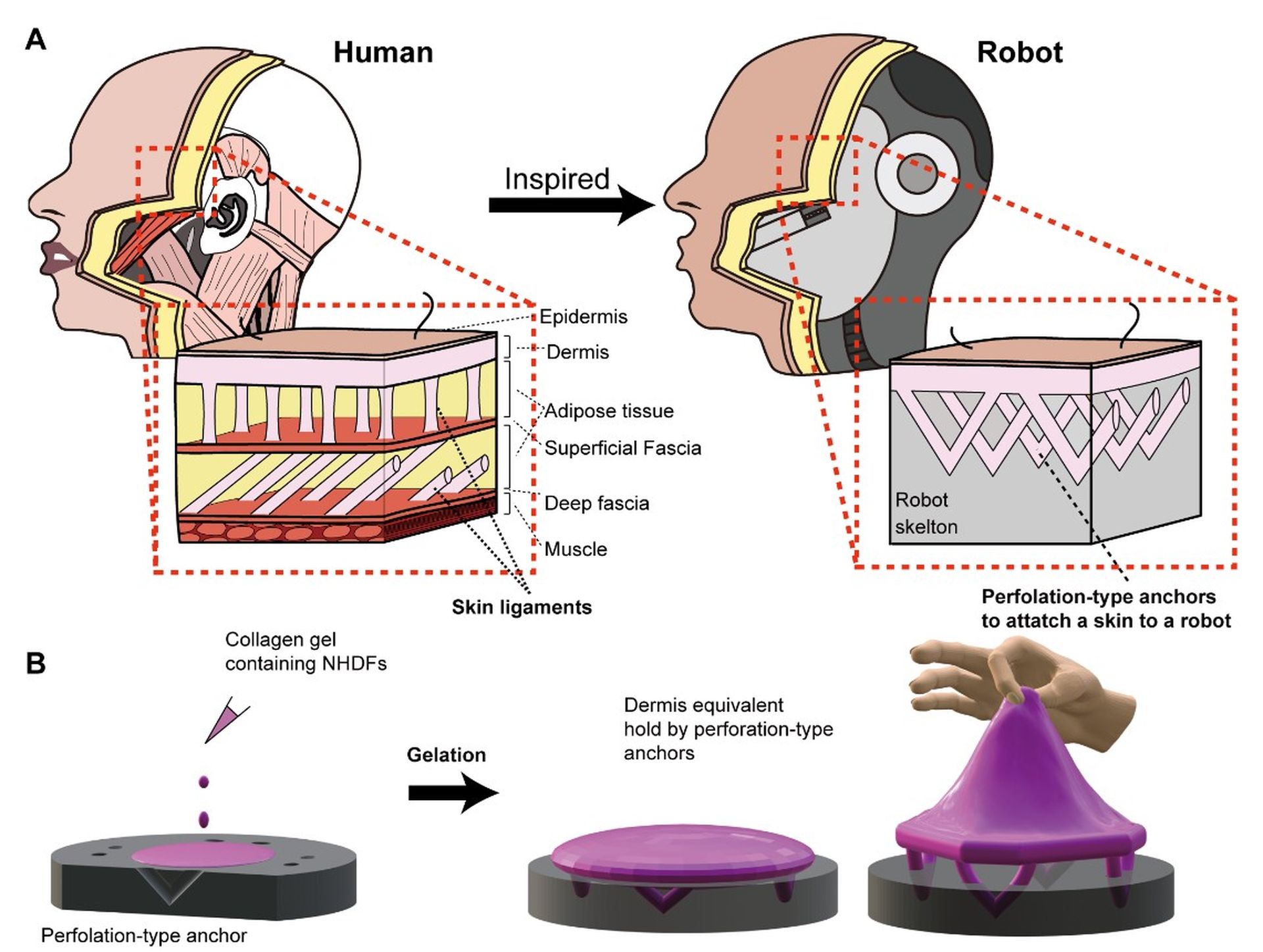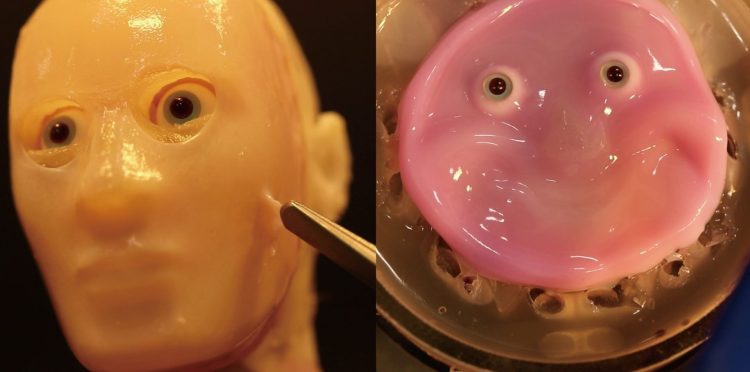Scientists at the University of Tokyo have taken a groundbreaking step in robotics: They have developed a living skin layer that can heal itself and even smile.
The innovative skin, obtained by replicating human skin cells on a collagen model in the laboratory, was placed on a 3D-printed resin base and successfully integrated into a robot face.
A big step towards human-like robots
Beyond providing a lifelike appearance, living skin can repair itself when damaged, just like human skin. What’s more, it can mimic facial expressions such as smiling. This technology can potentially revolutionize healthcare, the service sector, companionship, and humanoid robots interacting closely with humans.
Professor Shoji Takeuchi, the project’s head, emphasizes that living skin will be particularly useful for robots that need human-like functions. “Skin can repair itself when damaged, similar to how human skin heals wounds. Integrating sensory functions such as touch and temperature sensing is more possible with living tissues.”

Potential for the cosmetics and pharmaceutical industries
The researchers aim to create thicker, more realistic skin, including more complex skin structures such as sweat glands, sebaceous glands, pores, blood vessels, and nerves. This will allow robots to resemble humans and interact more naturally more closely.
Living skin has great potential not only in robotics but also in the cosmetics and pharmaceutical industries. Michio Kawai from Harvard University states that this technology can recreate wrinkle formation in a laboratory environment and be used to develop anti-wrinkle products.

Experts predict this groundbreaking technology could be widely used in robots interacting with humans within 10 years. This will drastically change not only the appearance of robots but also their functionality and interaction with humans. In the future, we may witness robots becoming indistinguishable from humans.
Featured image credit: The University of Tokyo





